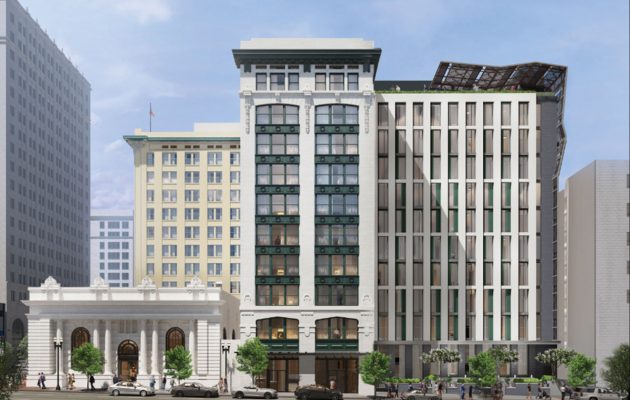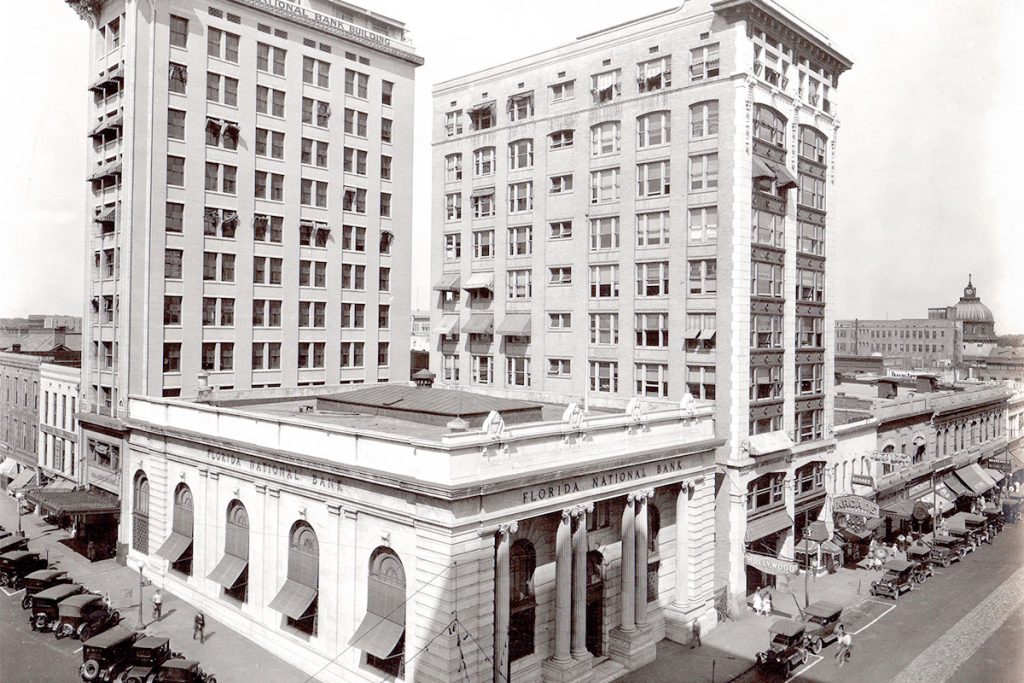Laura Street Trio Awaits Next Steps

Historic properties require unique financing
The future of the Laura Street Trio remains in limbo as parties return to the drawing board to settle on a redevelopment agreement to help fund its adaptive reuse and restoration.
New year, new deal
At a Committee of the Whole meeting on Jan. 4, representatives from the development team and the City discussed the merits and concerns about legislation introduced as an emergency proposing the appropriation of $22 million to fund a participation loan for the restoration and renovation of the historic trio. According to the bill summary, the bill waived several ordinance code provisions and policy guidelines.
At-Large Group 4 City Councilmember Matt Carlucci explained he introduced the bill as an emergency because of a deadline the developer had on locked-in interest rates with a lender. The developer would have needed the bill to pass quickly to secure those rates.
“Unlike any other deal in Jacksonville in recent times, you have a developer who is seeking to do the almost impossible: to rehabilitate not one, not two but three historically significant, post-Great Fire, legendary structures at the very epicenter of Jacksonville,” said attorney Jason Gabriel in his presentation to the council on behalf of the development team. “This is a true public-private partnership in the best sense of the phrase.”
Gabriel emphasized the need for haste in reaching an agreement on the project’s financing.
“The more time that passes in the financial planning phase, the more likely it is that market conditions will shift, making the initial financial plan obsolete before it can even be implemented,” he said.
In his presentation, Gabriel detailed the four parts of the deal, “three of [which] have remained the same all along, one of which is new in concept but has always been a part of the necessary ‘gap financing’ that’s necessary for this sort of rehabilitation project.”
The three previously discussed facets of the deal are the REV (Recapture Enhanced Value) Grant, the DPRP (Downtown Preservation and Revitalization Program) loan and the forgivable loan. The fourth was the aforementioned participation loan at the center of discussion.
Property owner and SouthEast Development Group principal and managing director Steve Atkins responded to questions regarding why the development team was pursuing this agreement versus one more traditionally structured.
“We have a stack of about $24 million in private equity in this project. Equity is expensive; equity has to have a return. We have to either pursue other equity opportunities or we have to pursue a public-private partnership with the City of Jacksonville,” he said. “But the Capital One product that we had an opportunity to pursue is probably the best-case scenario in the market that we’re faced with right now.”
A constitutional concern
During their respective presentations, Downtown Investment Authority (DIA) CEO Lori Boyer, City Chief Financial Officer Anna Brosche, Council Auditor Kim Taylor, and Special Counsel to the Mayor Mike Weinstein all expressed concerns regarding the deal before the council. Among those concerns were those regarding the constitutionality of the proposed deal.
“The General Counsel has advised, and I think has spoken to many of you, that more likely than not, the participation loan and replenishment guarantee violate the Florida Constitution,” Boyer said. “The constitution prohibits the lending of credit for private activities unless there’s a paramount public purpose such as major job creation, public sports or entertainment venues, etc. and they consulted outside general counsel who came to the same conclusion. This is a concern not only because citizens can sue, it’s a concern for those of us who have to execute the documents and warrant that they are legal binding obligations of the city.”
General Counsel Michael Fackler said his office’s analysis, in conjunction with an analysis review by an outside firm, concluded that “this project doesn’t meet that heightened standard of a paramount public purpose.”
Moving forward
After a lengthy discussion, Carlucci withdrew the emergency and the council opted to pass the baton back to the DIA Board to find a redevelopment agreement to which all parties can agree, though Boyer later said she believes the board’s charge is “much broader than that.”
“I think what was passed back to us is, figure out a way to get the historic buildings renovated,” she said. “The council president has said ‘work with urgency but don’t rush it, come up with something that works.’ We took that as it was important for staff to have two or three alternatives to offer the developer that we think would work and to have those ready by last week. So we do.”

Atkins purchased the Laura Street Trio and the Barnett Bank Building in 2013 and completed restorations on the latter in 2019. It is now a mixed-used development that serves as the North Florida flagship office for JP Morgan Chase and the home office for the Jacksonville Business Journal. It also offers residential space.
Atkins’ plans for the Trio include an Autograph Collection Hotel by Marriott offering 143 guest rooms, multiple restaurants and bars, ground-level retail space and 169 multifamily units, of which roughly 30% will be in the workforce category. The additional vacant acreage within the Trio’s footprint has allowed for the new construction add-ons, which will bring the total square footage to approximately 300,000.
Atkins said the Trio “really signifies and represents the most catalytic opportunity for change and revitalization in downtown Jacksonville.”
When asked about a backup plan for the Trio if a finance agreement could not be reached, he said, “Is there another program we could use? I don’t think there’s another use that we could come up with over a multifamily and/or hotel that would produce enough revenue to make it any different. We are committed to trying to make this program work. We think it’s not just the right program for those buildings, but we think it’s the right program for downtown and the needs of downtown.”
The Trio has sat vacant for more than 30 years, and Carlucci said their successful renovation would “be a 365-day-a-year economic development driver. It will develop jobs.”
“I just think we’re at a point now where everybody’s rallied behind it, just want to get it over the goal line, push it over the goal line,” he said. “The Laura Street Trio is kind of like our running back at the seven-yard line, and the whole city, and the DIA, and everybody is trying to push it across. That’s what I want to see happen.”
The three buildings – the Florida Life Building, the Bisbee Building and the Old Florida National Bank, or the Marble Bank – were built in the years following the Great Fire of 1901. Two of them – the Bisbee Building and the Florida Life Building – were designed by renowned Jacksonville architect Henry Klutho.
“Those three buildings took a chance on Jacksonville, and they helped rebuild Jacksonville’s present and pointed us towards a new future,” Carlucci said. “Ironically, all these many years later, those three buildings have the opportunity to help rebuild our present and rebuild our future again.”
By Michele Leivas
Resident Community News






